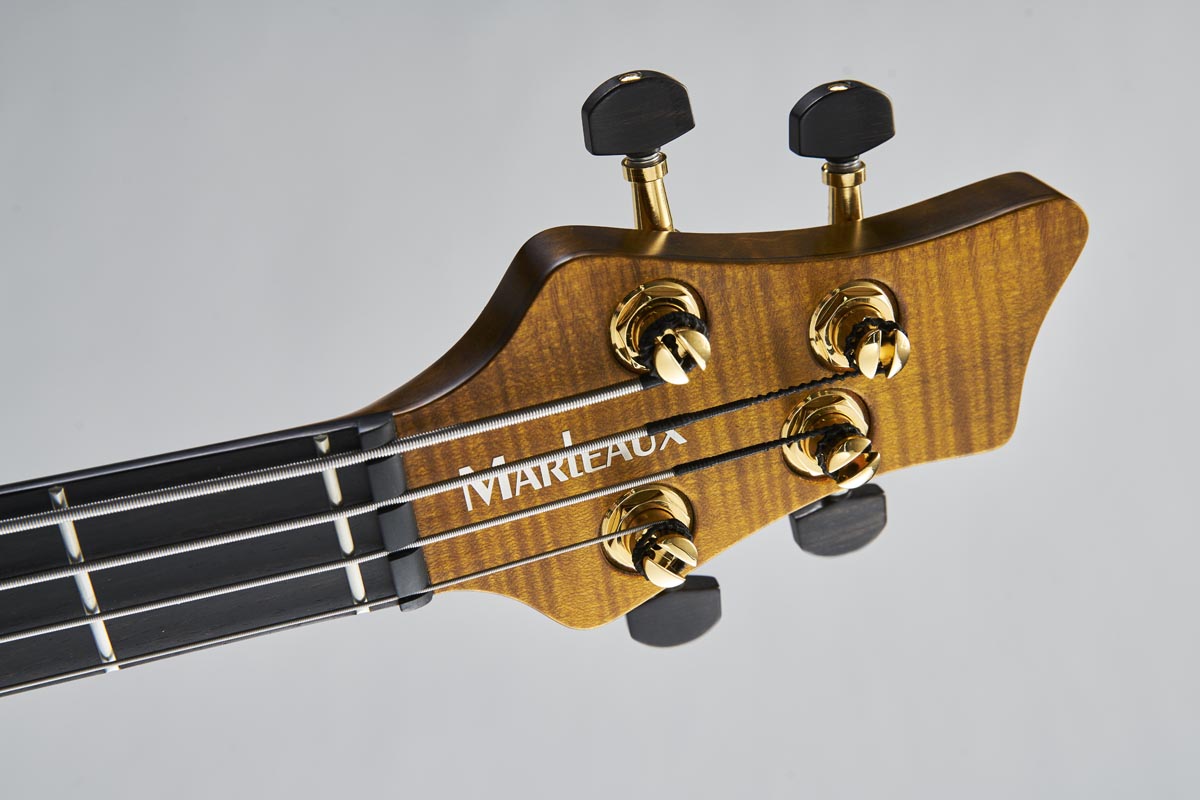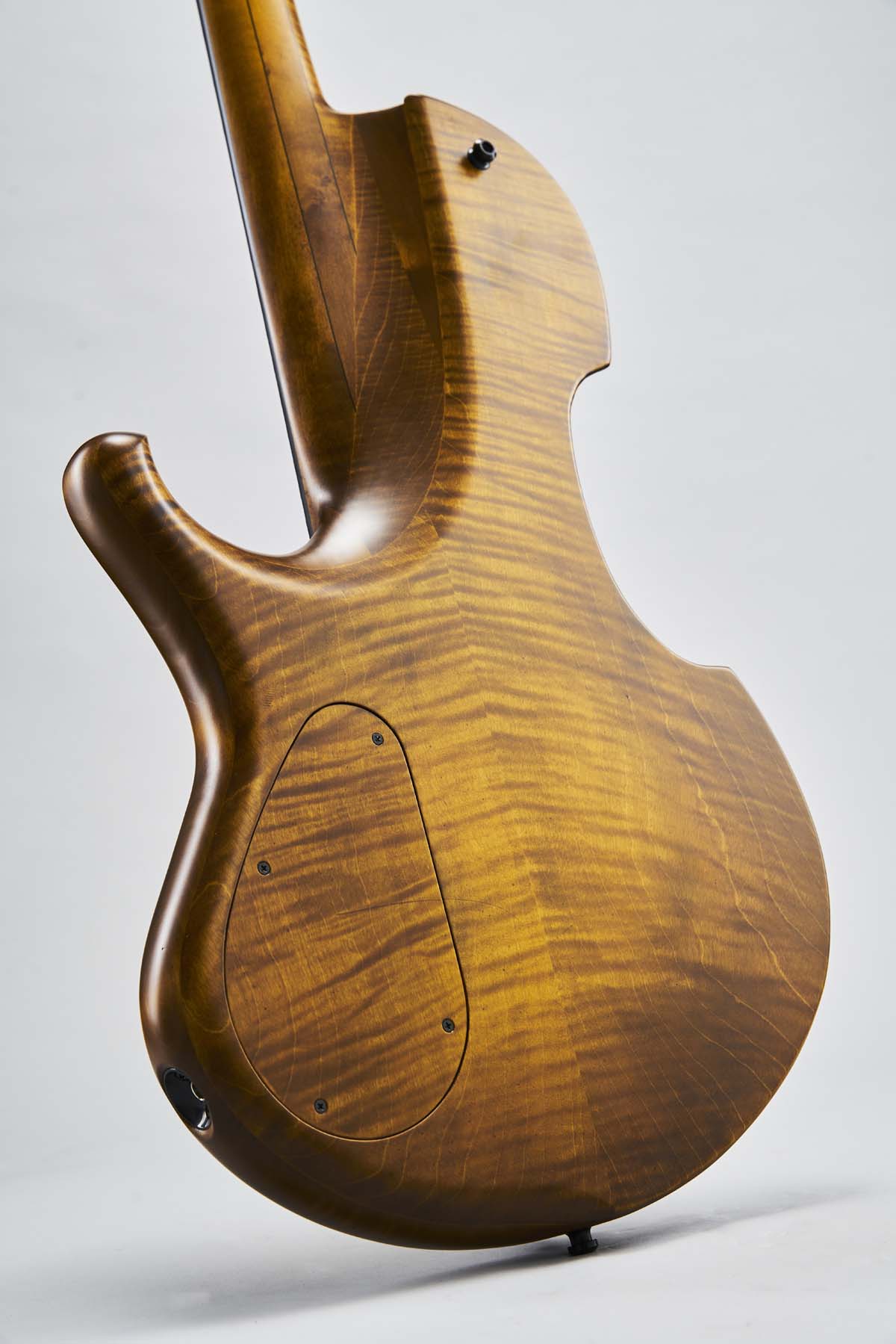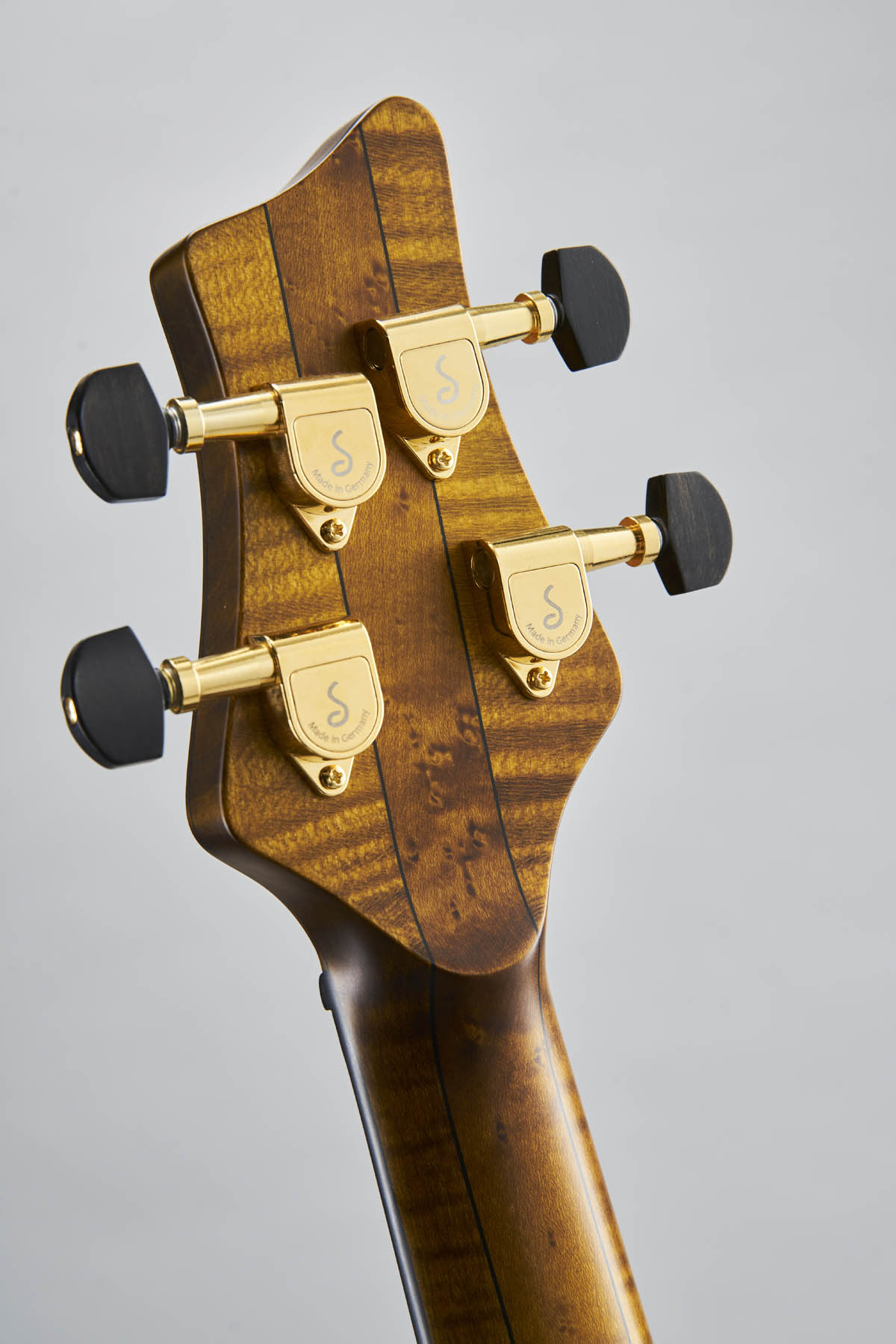Guitar World Verdict
A fine, if unusual, example from the Marleaux stable, the Contra commands an eye-watering price but could well be the high-performance boutique curio you've been looking for.
Pros
- +
Playability is off the charts.
- +
Supreme build quality.
Cons
- -
Could do with a little more tonal coloration.
You can trust Guitar World
We’ve seen many a Marleaux bass guitar here over the years – and the one thing that always stands out from this German luthier is the time, effort and skill that has been employed in the design and construction of the instruments.
At first sight, this semi-acoustic Contra bass seems to be no exception, with dramatic visuals that recall a classic era of German instrument construction. Needless to say, such skill and craftsmanship come at a cost – so is it worth paying?
Build Quality
The body of the Contra owes a definite tip of the hat to a violin or cello, but with a modern slant. The F-hole on the upper bout highlights its semi-acoustic properties, and the sumptuous ‘old violin aged’ finish over the flamed maple body and spruce top is a visual treat.
The flamed maple through-neck gives the bass rigidity courtesy of the five-piece laminate: This incorporates two smoked oak veneers which are very much in keeping with the generally antique aesthetic.
The well-sized headstock improves the overall balance and although the bass sits horizontally, this is rectified once placed on a strap. The black and gold hardware is top-notch too – a classy-looking instrument with bags of finesse.

Sounds and Playability
Being semi-acoustic, the Contra resonates and sustains nicely – and even without plugging the bass in, it nails its tonal intentions to the mast. The bottom end has a sublime roundness which swells as each note blooms, while the midrange has a dark quality that provides response and a low-range attack.
This works with the balanced top end – and thankfully, the high mids don’t contribute too much of a bark.
Plugged in, the tonal quality of the lumbers begins to shine through. The detail of each note is a pleasure to hear and the harmonic response is noticeable across the whole neck. While the six-control setup looks a little fiddly, in operation it’s straightforward enough.
During our test, this bass doesn’t suffer to any degree from howling or feedback, although the bass EQ should be added sparingly so as not to swamp the finer side of the tone.
However, I was surprised by how restricted the EQ controls seemed to be – with no particular extreme in cut or boost, just a usable ‘in-between’ choice of settings that can be dialled in.


The pickup selector switches offer a more useful array of tones, allowing each pickup to be operated in series, parallel or single-coil mode. This supplies some significant tonal variation: Single-coil mode offers the slippery, honky tones akin to a Jazz, while parallel mode provides a detailed but slinky tone to each pickup and series mode gives a power boost to either unit.
The slim but rounded neck profile is highly playable courtesy of the 40mm nut width, while the setup generally is of the highest order, as you would expect at this price. The 19mm string spacing, adjustable at the bridge, is welcome too.
Despite the limited contouring to the upper bout and none at all at the rear of the body, the violin-like shape accommodates the player’s body very snugly, even with those sharp-looking raised body edges.
The lower cutaway benefits the player by providing unhindered access to the upper regions of the 24-fret ebony fingerboard. Gerald Marleaux should be applauded for creating such a pleasingly playable bass.
Conclusion
There’s no debating the cost of this bass: £6750 is a hefty sum by anyone’s standards. Many of this instrument’s finer features will simply not be required by most working bass players – but if the high-end side of bass lutherie is your thing, and you can afford a break from the norm, this bass might just tick all of your boxes.
Specs
- Price: £6750
- Colour: Old violin aged, satin finish
- Body: Flamed maple and spruce top
- Neck: Flamed maple, five-piece laminate with two smoked oak veneers, satin finish
- Scale: 34"
- Neck Joint: Through-neck
- Nut Width: 40mm
- Fingerboard: Ebony
- Frets: 24
- Pickups: Marleaux ebony humbucking pickups x 2
- Electronics: Marleaux Contra 3.0 active circuit
- Controls: Volume, balance, bass/treble (stacked), passive tone control, pickup coil-split switches x 2 (humbucker parallel/single-coil/humbucker series)
- Hardware: ETS Contra black bridge, Schaller gold and ebony machine heads
- Weight: 3.7 kg / 8.15 lbs
- Case/gig bag included: Gigbag
- Left-hand option available: Yes, on request
- Contact: Marleaux
“This would make for the perfect first guitar for any style of player whether they’re trying to imitate John Mayer or John Petrucci”: Mooer MSC10 Pro review
“The most in-demand mods straight from the factory”: Fender’s elevated Player II Modified line brings the firm’s most sought-after guitar upgrades to the masses











